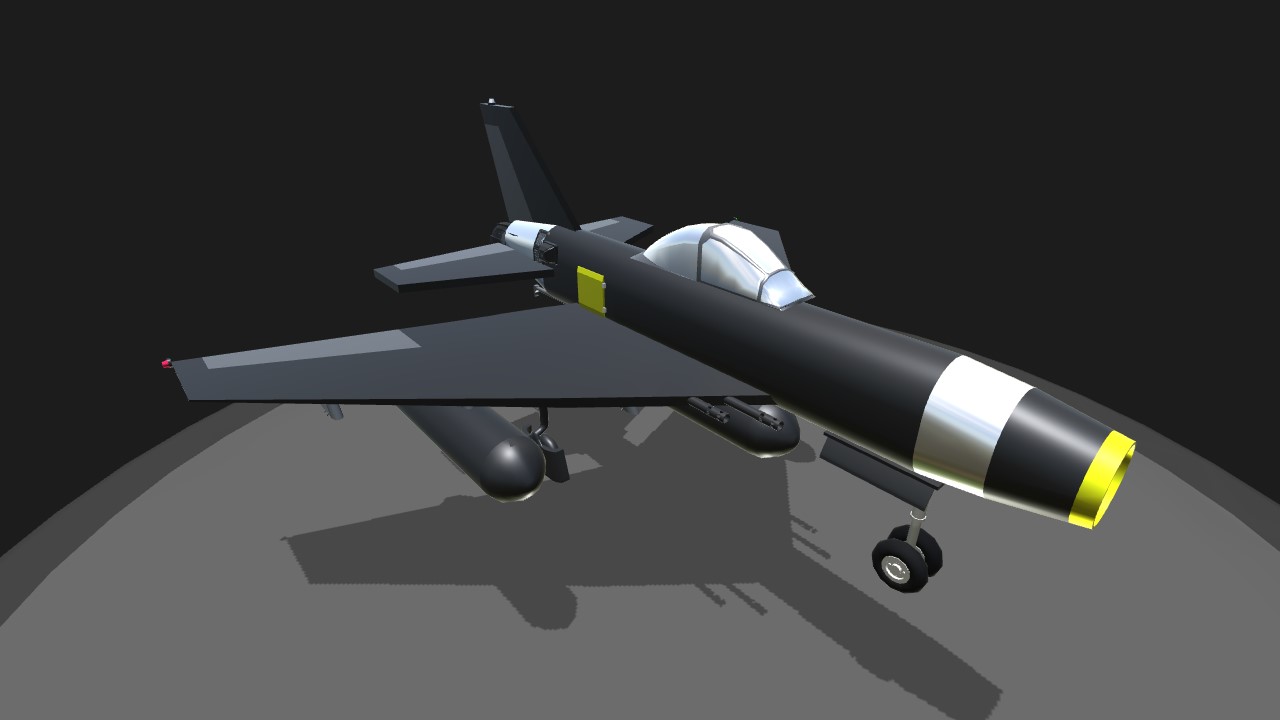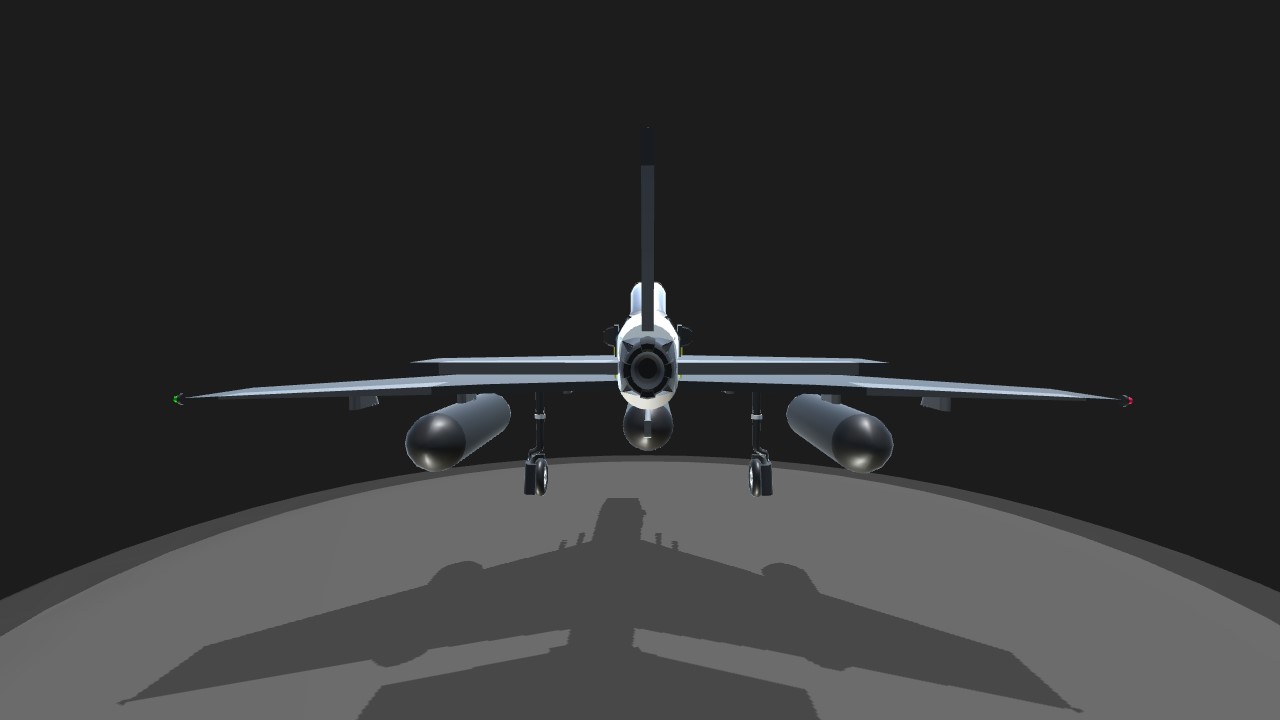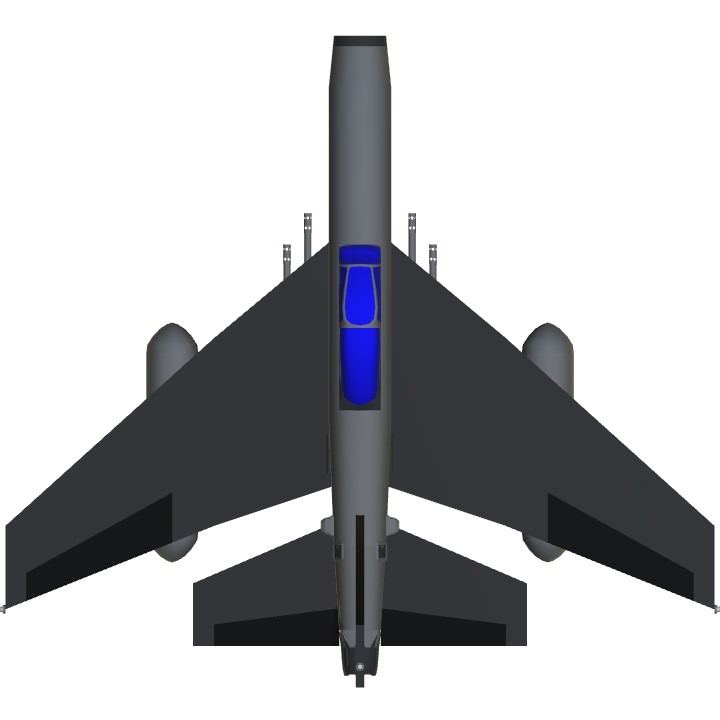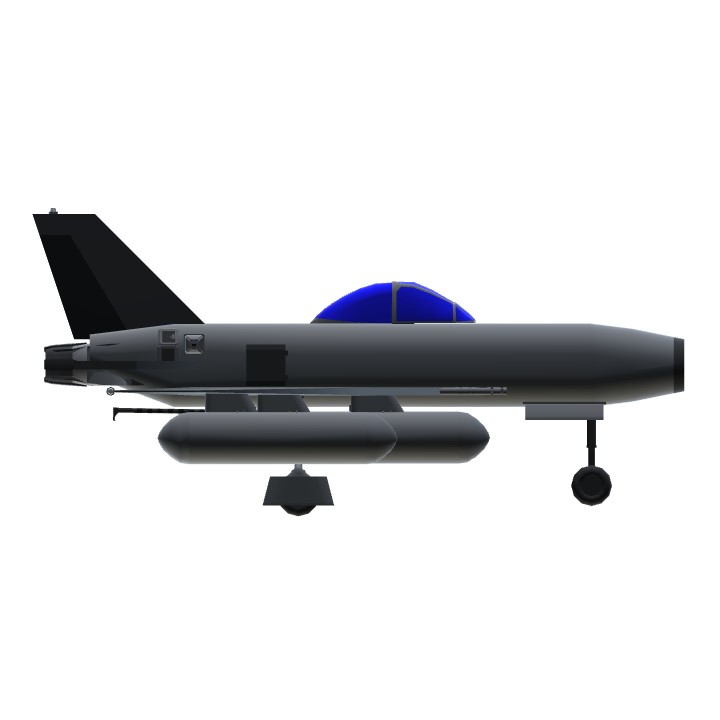Background:
The creation of the Pacific Air Defense Forces established a need for a new fighter for the Jet Age. Engineers from the United States and other NATO countries founded Pacific Aerospace to manufacture the first service fighter for the new nation. Using abandoned P-51 Mustangs from the Second World War as the basis for the new design, the F-50 Marlin was developed as an extremely versatile multirole aircraft capable of performing Air Superiority, Intercept, Ground Strike/CAS, and Anti-Ship missions from the nation's airbases or aircraft carrier. It first flew in 1954, and entered service in early 1956. While the aircraft lacked speed due to budget constraints on engine design, advanced countermeasure systems and an excellent power-to-weight ratio of over 1.0 when unloaded made the Marlin an excellent dogfighter.
Performance:
Unloaded Weight (Full Fuel):10,376 lbs
Loaded Weight (With Drop Tanks): 12,398 lbs
Max Takeoff Weight (Carrier): 17,000 lbs
Thrust: 11,240 lb/f
Thrust/Weight Ratio (Unloaded): 1.08
Rotation Speed: 180 mph
Stall Speed: 120 mph
Operation:
Taxi below 25 mph
Full Up trim for takeoff
Rotate at 180 mph
Landing approach speed 180 mph
Deploy Drogue Chutes on touchdown for non-carrier landing
Inner Wing/Underbelly hardpoints limited to missiles/rocket pods or drop tank
Systems:
AG1- Jettison Weapons
AG2- Drogue Chutes
AG3- Eject
AG4- Jettison Drop Tanks
AG5- Landing Hook
AG8- Lights
Specifications
General Characteristics
- Predecessor P-51 Mustang
- Created On iOS
- Wingspan 28.3ft (8.6m)
- Length 25.5ft (7.8m)
- Height 11.9ft (3.6m)
- Empty Weight 6,316lbs (2,865kg)
- Loaded Weight 12,397lbs (5,623kg)
Performance
- Power/Weight Ratio 0.906
- Wing Loading 52.8lbs/ft2 (257.8kg/m2)
- Wing Area 234.8ft2 (21.8m2)
- Drag Points 2727
Parts
- Number of Parts 53
- Control Surfaces 5
- Performance Cost 331






